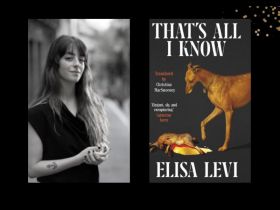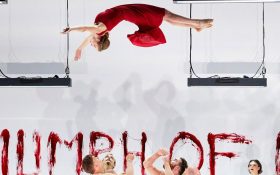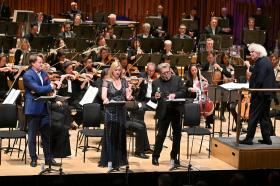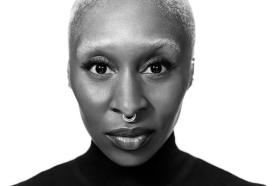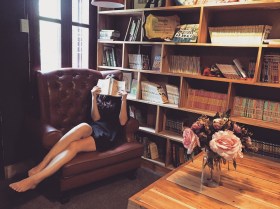Over the last two decades, the island of Singapore has worked tirelessly to transform itself into one of the Asia–Pacific’s most culturally vibrant cities.
The arts have long held an important place in Singaporean society, which regards them as an integral part of the nation’s cultural identity. According to the Singaporean Ministry of Information Communication and the Arts (MICA) the arts play three very important roles in the firmament of Singaporean society, acting as “a foundation of our cultural heritage; a source of aesthetic inspiration and intellectual stimulation; and a rich resource for our creative industries.”
And with 2006 marking the 20th anniversary of the Singapore Arts Festival, with its theme of “one season, many faces”, the country seems to be close to finally achieving its long worked for goal of becoming an important player in the global arts forum. Organised by the National Arts Council (NAC), the Festival is considered by many to be one of the most significant events in the regional arts scene, with a heady mix of theatre arts, dance, music and visual arts performed by both local and international acts.
To those in power, the stakes are high, with the festival regarded as a vital springboard for Singaporean art to dive into the international art scene and create what some have called a ‘New Asian Renaissance’.
A rapidly changing global economy has also increased the stakes of Singapore’s success in establishing itself as a world class cultural centre. Singapore’s Minister For Information Lee Boon Yang stated that “a creative economy is something that is becoming much more important to Singapore these days…inevitably, our role as a major manufacturing centre will decline. Whatever we can do in Singapore, they can do as well in China or India at a fraction of the cost.” And according to noted arts scholar Tim Doling: “Crucially, at a time when many Asian countries are seeking ways to trim expenditure on culture and the arts, the government of Singapore has chosen to benchmark the development of the nation against its artistic achievements.”
The groundwork for Singapore’s emergence as a key player in the global arts was laid a number of years ago. The 1987 release of the Report of the Advisory Council on Culture and the Arts, which studied the needs of the arts, the aspirations of Singapore’s people and the requirements needed to implement the vision of a culturally vibrant society, was largely responsible for charting the direction of the arts scene in Singapore and led to the formation of the National Arts Council, Singapore’s premier arts body.
The “Renaissance” presented by the Singapore government in 2000 was the next significant step in establishing the Singaporean arts community, stressing as it did the importance of the arts and bringing about much needed new funding to invigorate what had become an increasingly stale and insular arts scene.
In 2004, according to the NAC, the Singaporean government set aside $200 million to be invested over period of five years, with the aim of doubling the countries creative industries. A target was set for the sector to contribute 6% to the national economy by 2012, with the underlying hope that industry growth would see more demand and opportunities for those who contributed to the ever growing demand for creative products and services, (an industry estimated to be worth US$2 trillion a year and growing at 5% annually).
While all good news on an economic front, there are many, however, who are critical of the practices of the Singaporean government in relation to the control of Singaporean society, and this extends to its control over the arts.
Increasingly, the issue of civil liberties is becoming more important in Singapore, as the country seeks to create a vibrant culture to attract tourists and permanent residents from aboard, while trying to stem the loss of local artists who move abroad seeking greater opportunities for themselves.
More and more debate is taking place within the Singaporean arts community concerning the government’s control over public funding for the arts, its management of all major arts facilities and its near total power to censor public performances and exhibitions. Understandably, many leading Singaporean arts figures argue that true creativity can only flourish in an environment where greater autonomy is afforded the arts community.
In one recent example, local filmmaker Martyn See was forced to withdraw a documentary he made about a Singaporean politician from the Singapore International Film Festival after authorities warned that he could be jailed for up to two years or fined up to S$100,000 (US$60,000) if it was screened. The film was supposedly in danger of violating a local law that prohibited the making or distribution of any “party political film”. Meanwhile Singaporean playwright Kuo Pau Kun questioned the state’s role in the arts, asking: “Why has it been necessary for the state to expand and strengthen its domination in the arts, instead of enabling the non-government enterprises to grow with state assistance?”
Only a decade ago, the Singapore arts scene experienced a watershed of works by gay and lesbian artists who sought to express themselves, tackling issues of invisibility, intolerance, sexuality, censorship, and gay rights. And while a number of gay themed plays were performed as late as 2004, the current climate is anything but promising. Gay artists live in fear of laws such as the Undesirable Publications Act, which imposes the threat of monetary fines and possible jail terms for the creation of any piece of writing the government deems to be offensive or culturally inflammatory. All in all, hardly an environment conducive to the creation of great art, regardless of governmental claims to the contrary.
At the unveiling of an exhibit last year, Singaporean artist Jane Ittogi Shanmugaratnam commented that “contemporary art forces upon us a new mirror – to one picture there are many experiences, to one event there are many interpretations, to one life, there are many possibilities. The human experience draws from many wells. The arts give us access to the deepest of those wells.”
With the inaugural Singaporean Biennale arriving later this year (which, if successful would cement Singapore’s place even further in the global arts scene), it remains to be seen whether such sentiments have any real validity in modern day Singapore.
